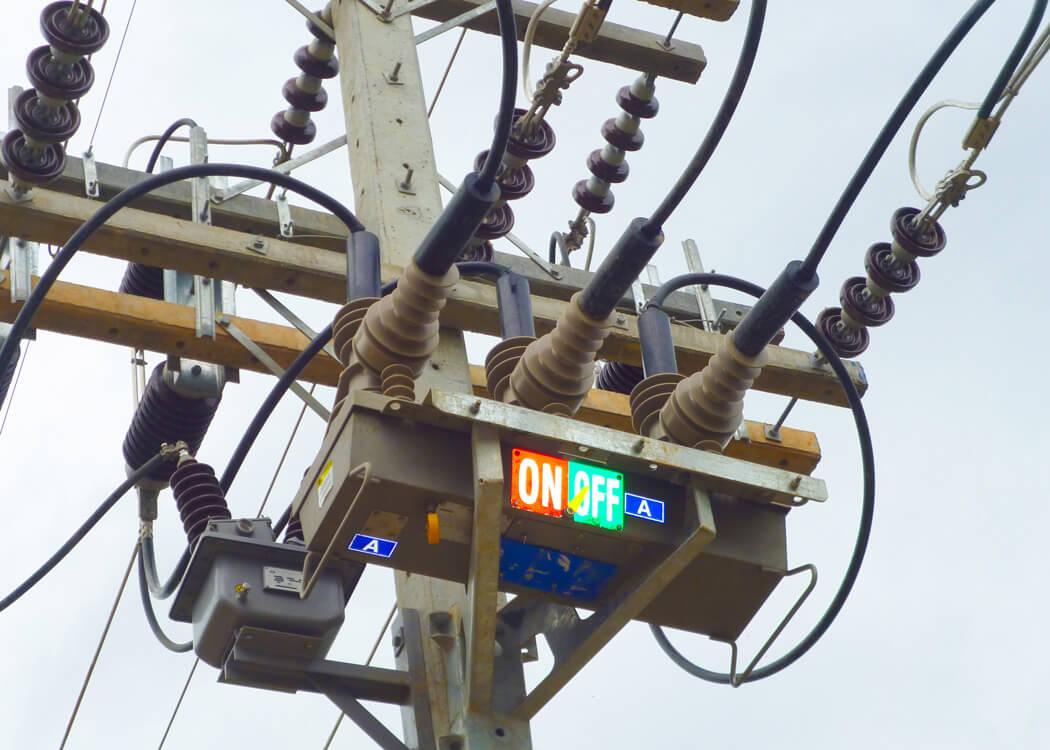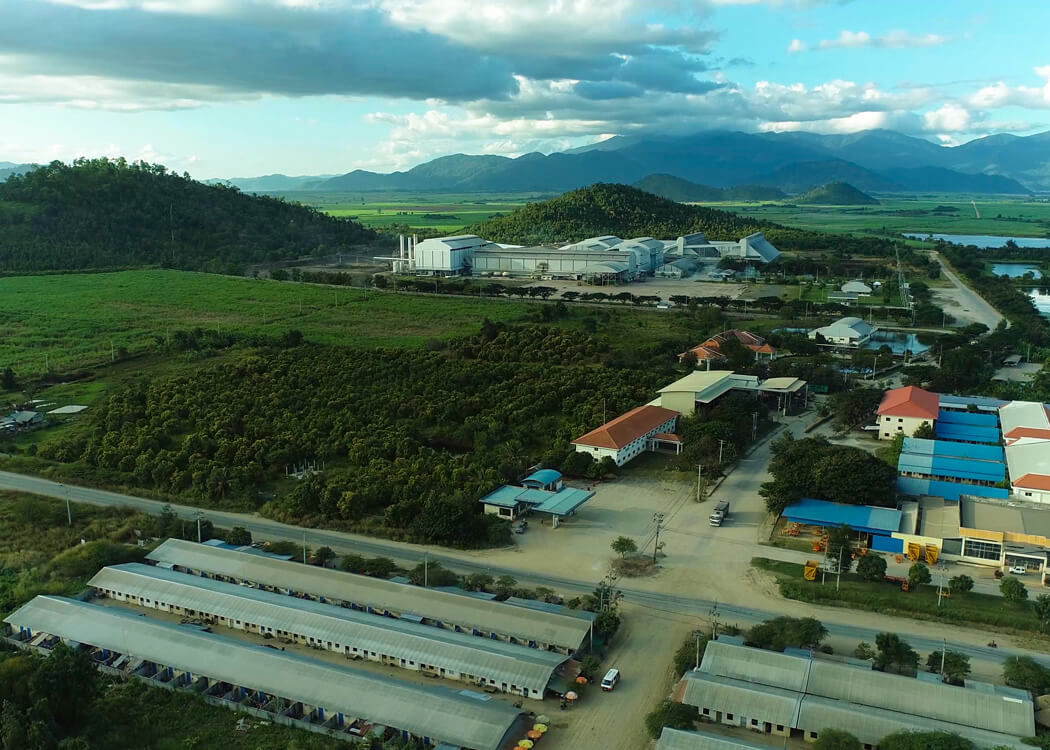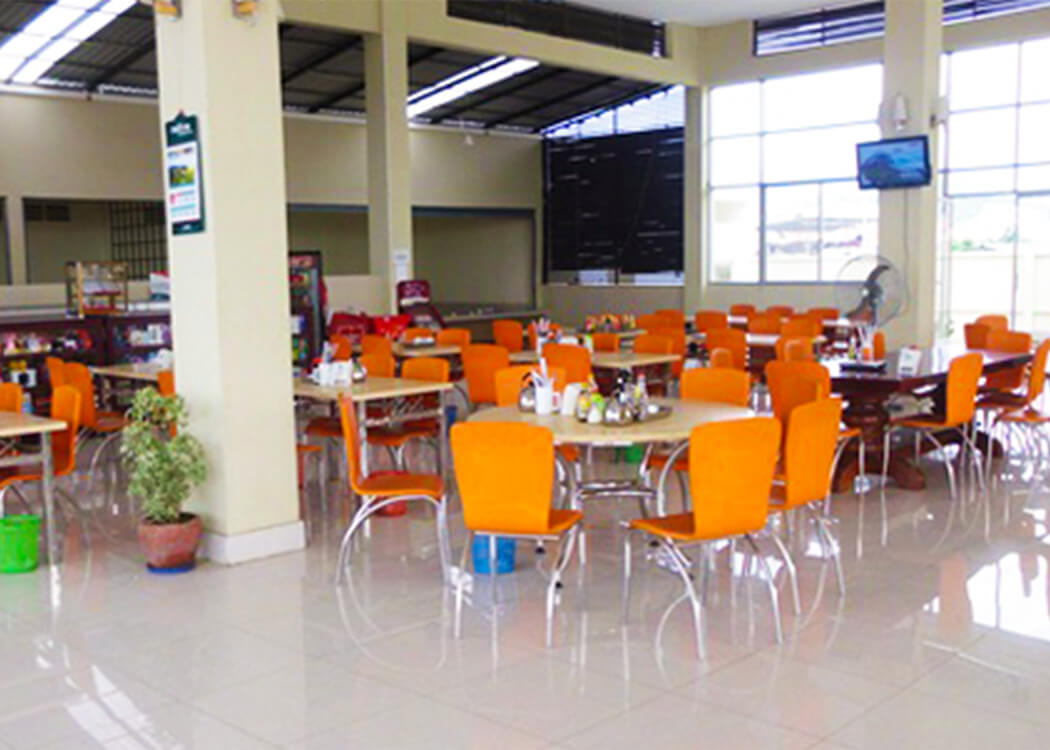Employee Accommodation
Electricity Distribution
In addition of improving road accessibility, Kampong Speu Sugar Co.,Ltd has built power plant which can produce 16 Mw to service within the factory and sell to surrounding area. 11 Mw will be used within the factory while the rest will be sold to governments and villagers with an acceptable price. Kampong Speu Sugar has invested USD 1.5 million in the transmission line linked from Thnol Tolteng to factory at Trapeang Cho Commune, Kompong Speu. It is 68.5 km long and that allows households along the road to easily access to power energy. That believed to be a main mechanism to link Trapeang Cho residents to the other parts of the country.
Water Treatment
Kampong Speu Sugar Co.,Ltd, also solve the problem of drinking water for Trapeang Cho residents. The company has built clean water plant to regenerates muddy water or water containing impurities to be clean and drinkable water. The plant capacity is 5000 meters cube per day and that clean water plant allows employee and villagers to have good quality water consumption and improve their health condition as well as reducing their expense on health care.
Road
For the development of business and community, Kampong Speu Sugar Co.,Ltd. had invested in the necessity infrastructures that changed the life of Trapeang Cho’s residents. To better the road accessibility of the factory cane transporting and villagers, the company has constructed a road of 22 kilo meters, linking the area of Tran Tayeng commune to Trapeang Cho Commune, including two bridges, where it used to be a footpath/alleyway.
Employment Opportunity
Kompong Speu province’s Trapeang Cho Commune is no longer an isolated place nor do place of less develop after Kampong Speu Sugar company invested into that community. More than just providing job opportunity to villagers, the company had injected vast of money on infrastructure and other facilities that helps develop community as a whole.
With USD 150 million, the company invested into three areas: sugar cane plantation, refined sugar factory, and basic infrastructure.
Kampong Speu Sugar, bearing a mission of harness and adopting internationally competitive business practices, had transformed over 9,000 hectare of economics land concession into an industrial region. People who lived there for years had received fairly compensation in cash from the company or land from the government for their land ownership.
While villagers in the area used to do farming, earn from logging, drink improper water quality, got no access to electricity, and experience bad road condition, everything have been positively changed.
Kampong Speu Sugar Co.,Ltd. provided many jobs, excluding the employment opportunity created by small merchants and retailers surrounding the factory.
Mainly:
– Crushing Season: Factory need many unskilled workers, while plantation need many workers to cut the cane
– Non crushing Season: factory need many unskilled workers, while plantation need many workers to maintaining the cane.
– Other farmers: need many workers.
Business opportunity: there are many restaurants, shops, hair salon, garage, and so on. More importantly, people can earn income from subcontract of transportation, cane cutting, building, and so on.
Farming opportunity: once people is familiar with the sugarcane planting technique, they are able to plant it on their land and the company will fix the buying properly price.
Social Responsibility
Kampong Speu Sugar Co.,Ltd., always thrives to protect the surrounding environment and be the most environmentally friendly factory for the benefit of the nature and nearby community. The company takes comprehensive approaches to environmental responsibility as entail since the beginning of operation.
Kampong Speu Sugar has dramatically reduced the environmental impact of its facilities. Material use and facility in house designed to be the most energy efficient factory in Cambodia. The company has built-in house systems to control and increase the energy efficiency of the material use inside the building and plant such as the real-time power monitoring and analytics during operation. In addition, building is designed with white cool-roof to provide maximum solar reflectivity. The power is distributed at higher voltages, which reduces power loss. Working environment is certified to have no pollution that can harm to human health as accredited by the Ministry of Industry Mine and Energy.
Kampong Speu Sugar also invests into renewable energy and thereby helps residents nearby the area to live peacefully and safety from Greenhouse Gas effects. The company uses power energy generated mainly from baggasse, a by-product of the cane based sugar manufacturing process, to run the process of producing sugar. That baggase-generated power is said to be the clean energy that has very little negative drawback to the atmosphere in contrast to expensive and dirty diesel generators, the methods by which most of the country’s power is generated. With the power capacity of 16 Mw, 11 Mw is used within the plant and other facilities while the rest is sold to the government and village nearby the plant. In addition, Kampong Speu Sugar has invested USD 1.5 million in the transmission line linked from Thnol Tolteng to factory at Trapeang Cho, Oral, Kompong Speu. It is 68.5 km long and that allows households along the road to access to power energy.
As of factory waste and sewage, which is a toxic substance and is hazardous to environment and human health, the company had built seven lakes to store and transforms those harmful disposals into usable water and non-toxic waste. These seven lakes are built as a vacuum system that sewage drains from one lake to another lake. Gradually, sewage flows into the last lake and becomes bio-fertilizers that company gives away to cane grower to use in the farmland and villagers to use in their orchards.
The company also invested in water-treatment system and water-storage filter that regenerates muddy water or water containing impurities to become clean and drinkable. The plant capacity is 5000 cubic meters per day. That clean water plant allows employees and villagers to have good quality water consumption and improve their health condition as well as reducing their expense on health care.























